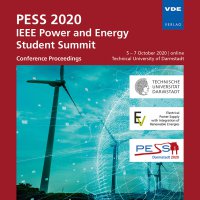Investigation on the PD and breakdown behaviour of alternative insu-lating gas mixtures as a result of typical defects
Conference: PESS 2020 - IEEE Power and Energy Student Summit
10/05/2020 - 10/07/2020 at online
Proceedings: PESS 2020
Pages: 6Language: englishTyp: PDF
Authors:
Kempf, Michael; Wiener, Johannes (High Voltage Laboratories, Technical University Darmstadt, Darmstadt, Germany)
Abstract:
Partial discharge (PD) measurements can be used to detect various types of defects in electrical equipment e.g. due to manufacturing or aging. Since different kind of defects result in a different phase-resolved partial discharge (PRPD) pattern, it is possible to recognize typical defects by these PRPD patterns. While for gaseous insulating systems these patterns are well known for the established insulating gas sulfur hexafluoride (SF6), there is only little experience for the eco-friendly alternative insulating gases. Therefore, the PRPD patterns for SF6, for the natural N2, for SF6 mixed with N2 and for two alternative insulating gas mixtures are obtained and compared in this paper using a tip-plate electrode arrangement for different gap distances and different gas pressures. It could be observed, that for the investigated defect the PRPD patterns were very similar for all gas mixtures, hence the detection and classification of this defect is possible using the same patterns as known for SF6. Additionally, the ratio of breakdown voltage to PD inception voltage is of major interest for the different insulating gas mixtures, since a higher ratio grants a more reliable operation of the electrical equipment. This ratio highly depends on gas parameters such as electron affinity resulting in a lower ratio for small pressures and a small gap distance for N2. For higher pressures and larger gap distances, the effect of corona stabilization has to be taken into account, which can be observed for pure SF6, SF6 mixed with N2 and the two alternative insulating gas mixtures.


